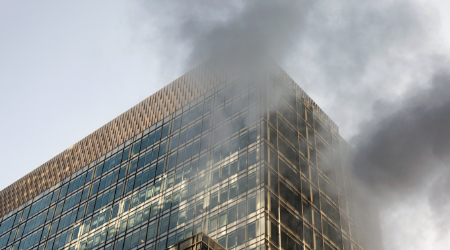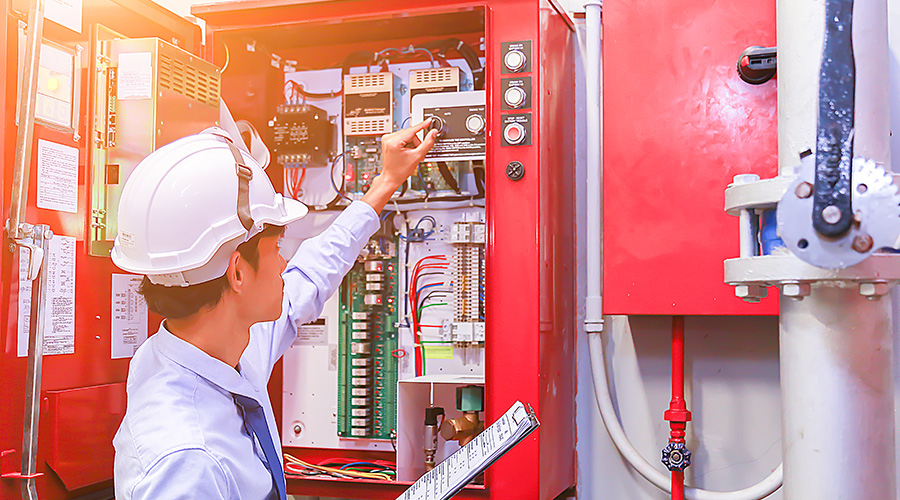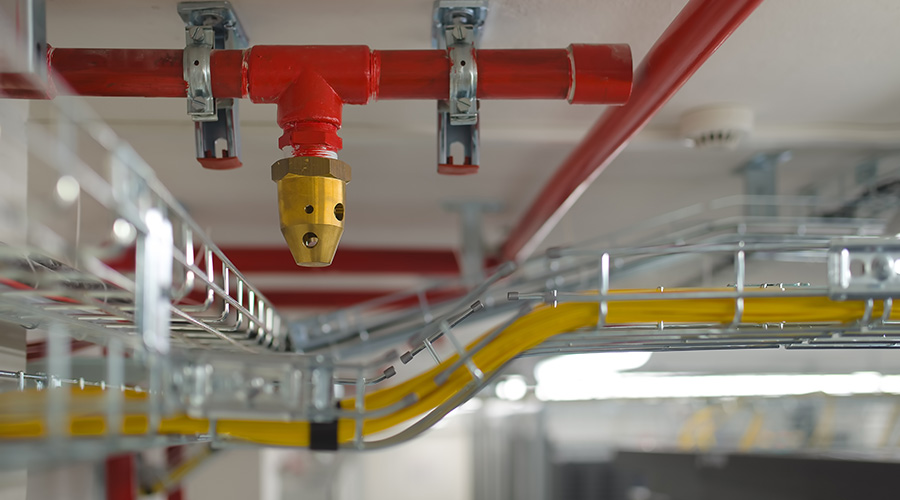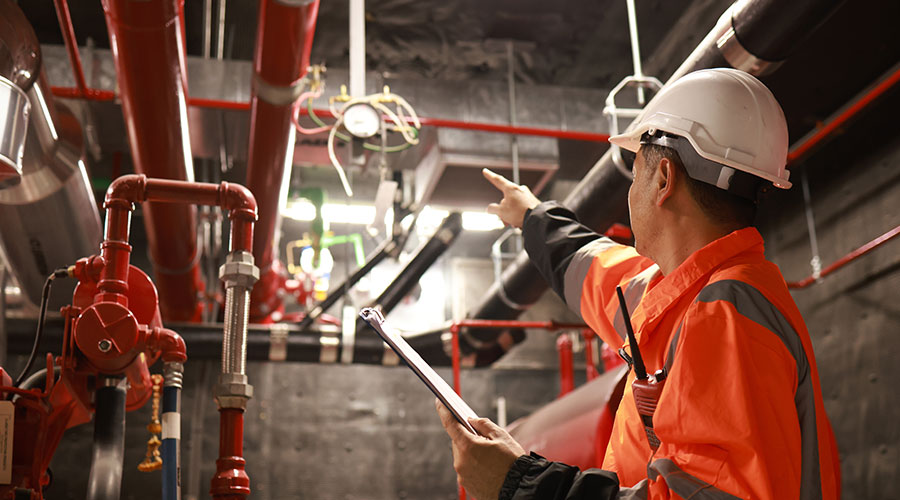Six Best Practices for Fire Prevention
A fire is one of the costliest hazards to a building. Follow these steps to mitigate the risk of a fire in your facility.
A fire at your commercial real estate property is one of the most difficult challenges you could face.
Between medical costs, lost wages, damages to your building, and interruptions to service, fires are one of the costliest hazards. As recently as 2019, fires in the United States caused nearly $14.82 billion in property loss alone, according to Statista. That’s why taking steps to recognize hazards—and correcting them—is so important.
Fortunately, a common set of NFPA and local standards can help your team spot warning signs and help you proactively manage risks — regardless of who occupies your building. Here are a set of recommendations for facility managers to help get started preparing for fire prevention.
1. Pre-plan
Communication is one of the most powerful fire prevention tools. Whether you manage a multi-tenant structure or several buildings, you work with a lot of businesses.
Each of their operations create a unique set of fire hazards, which require a personalized plan. Like any business, their operations may evolve. Therefore, your facilities staff should maintain regular communication regarding any changes your tenant makes, including:
- Adjusted work areas
- New products, services, materials, or operations
- Alternative energy usage
- Updated policies
- Increased employee numbers
When you welcome a new business to your facility, consider asking the leaseholder to sign a contract that outlines which operational changes require communication with your team. The contract sets expectations from the start, and helps you maintain awareness of new operations that could increase your facility’s fire risk.
2. Monitor electrical hazards
After your tenants commit to a communication plan, it’s up to your team to maintain the general property and structures within it. One of those structures is your electrical system.
Think of your facility’s electrical distribution system as the nerve center of your facility. Just one faulty wire could cause a million-dollar loss.
Because local and state electrical codes vary, have a licensed electrician inspect your building’s electrical system at least every five years or as suggested by your local experts. While a professional contractor should determine the scope of the inspection, you may want to ask your electrician to:
- Verify that all wiring diagrams and manuals reflect recent building updates.
- Assess your electrical equipment, including motors, transformers, and controls.
- Check fuses, circuit breakers, protective relays, and motor overload relays to ensure each component is in good physical condition and operating within its load level rating.
- Perform infrared scans to discover early warning signs.
- Document the inspection results. Include the test date, who conducted the test, and equipment tested.
By taking the time to evaluate your electrical equipment on a scheduled basis, you’re choosing an effective, low-cost, and easy way to reduce your building’s fire risks.
3. Lower heating risks
Like electrical hazards, your building’s heating equipment requires frequent checkups documented by a licensed contractor. The heating unit should be cleaned, checked for leaks, combustion-tested, and have every control checked. Other considerations include:
- Avoiding storage of combustibles near heating equipment
- Allowing proper clearance of exhaust vents
- Limiting the use of portable heaters, especially on combustible floors
If your tenants use additional heat-generating equipment, place it away from flammable hazards. The following tips can lower your risk of a fire caused by portable heaters.
- Keep space and portable heaters at least 36 inches away from anything combustible (paper, boxes, walls, woodwork).
- Only plug electric heaters into circuits that can handle the extra load. These types of heaters require much more power than a light bulb or an electric powered hand tool.
- Only use the fuel designated by the manufacturer of the heater.
- Allow the heater to cool down before refueling. Store the fuel away from the heater.
- Don’t leave space heaters unattended, including overnight.
4. Check fire extinguishers
Once you’ve identified the structural and operational risks within your facility, it’s time to safeguard your building if a fire ignites. Portable fire extinguishers are an effective first line of defense against smaller fires—as long as you maintain them, place them strategically, and use them properly.
With different operations taking place throughout your property, make sure you have the correct extinguishers within your building. Below are the types of fires your extinguishers can handle based on their rating:
- Class A: ordinary materials like cloth, wood, and paper
- Class B: combustibles and flammable liquids
- Class C: electrical fires
- Multipurpose: labeled A-B, B-C, or A-B-C. Can handle the types of fires listed above.
After you secure the properly rated extinguishers for your building’s risks, place them where they’re easily visible and protected from damage. Below are a few placement considerations based on your facility:
- At least one fire extinguisher within 100 feet of any operation on a site
- At least one 2A-rated extinguisher on each floor of a multi-story building
- At least one 2A-or-higher rated fire extinguisher for every 3,000 square feet
5. Test sprinkler requirements
If fire extinguishers are your first line of defense, sprinkler systems are your building’s last layer of protection. Bottom line, fire sprinkler systems save lives by cooling and wetting surfaces, depriving the fire of fuel sources and preventing flashover.
Prior to a new business officially moving in, ensure that your fire sprinkler systems meet the design requirements of their expected occupancy. A licensed fire protection contractor can help you review the following areas:
- Your building’s current water supply
- The potential hazard level of the building and protection requirements
- The type of sprinkler heads and piping needed
As a building owner, your structures vary and so will your requirements. In these cases, refer to the NFPA 13, which includes industry benchmarks for commercial facilities.
It’s worth noting that the most common cause of sprinkler failures is intentional or inadvertently closed valves. For this reason, you should ask your local fire marshal to conduct a quarterly two-inch drain test and inspect your water control valves to ensure they remain open.
Annual tests can give you and your tenants the peace of mind that your extinguishers and sprinklers will work when you need them most. If these devices can help stop the spread of even one fire, it could save millions of dollars. That’s time well spent.
6. Stay fire-ready
Reducing fire risk is a team effort. It takes commitment from you, your tenants, and local experts to find a plan that works for your building. As with any risk, the possibility of a fire always exists, therefore it’s best to combine the strategies above with tailored property coverage for your building.
With a proactive approach, you can achieve the most important goal — protecting your business and theirs.
Al Paniagua is a senior safety consultant for Sentry Insurance. Sentry provides insurance and risk management solutions for commercial real estate businesses. Follow Sentry on LinkedIn for more tips.
Related Topics:












